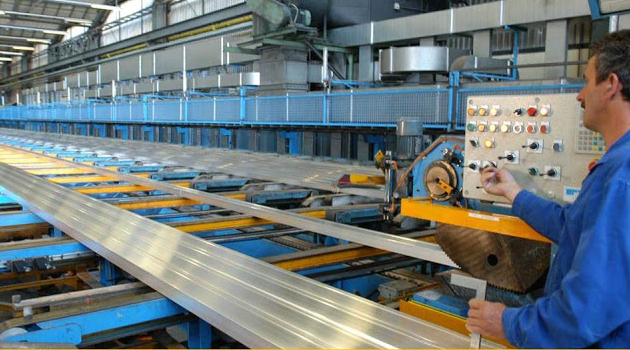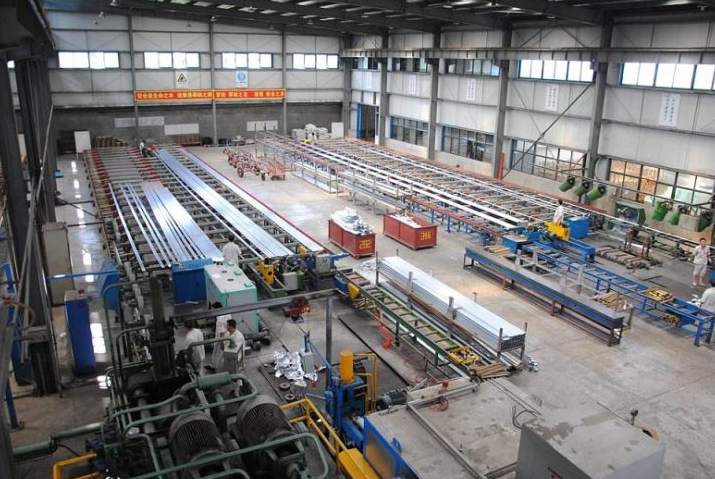Yes, extrusion is ideal for mass production due to its efficiency, precision, and cost-effectiveness in shaping consistent products.
Overview of Extrusion in Mass Production
The Process of Extrusion Explained
Extrusion transforms material into fixed cross-sectional profiles.

Mechanics: Material is heated and forced through a die.
Materials: Commonly used materials include plastics and metals.
Temperature: For metals, temperatures range from 350°C to 500°C.
Speed: Production speeds vary, typically 0.5 to 100 meters per minute.
Energy Use: Energy consumption can be 20 to 200 kW.
Key Characteristics of Extrusion in Manufacturing
Extrusion is favored in manufacturing for its efficiency and product consistency.
Efficiency: It allows for continuous, high-volume production.
Product Quality: Ensures uniform cross-sectional profiles.
Flexibility: Can produce a variety of shapes and sizes.
Energy Efficiency: Modern machines are more energy-efficient.
For more details, the Wikipedia page on Extrusion is a helpful resource.
Cost Analysis in Extrusion for Mass Production
Initial Setup and Equipment Costs
| Cost Factor | Details | Estimated Range |
|---|---|---|
| Machinery Cost | Price of extrusion machines | $20,000 – $500,000 depending on size and capability |
| Die Costs | Custom dies for specific profiles | $1,000 – $10,000 per die |
| Facility Costs | Space and infrastructure for extrusion setup | Varies widely based on location and size |
| Training and Labor | Costs for training staff on equipment | Approximately $5,000 – $20,000 |
Long-term Cost Savings and Per-Unit Cost Analysis
| Cost Factor | Efficiency/Impact | Long-term Benefit |
|---|---|---|
| Material Usage | High material efficiency with minimal waste | Significant savings over high-volume production |
| Energy Consumption | Modern machines offer energy efficiency | Reduced operational costs, estimated 10-20% savings |
| Maintenance | Regular maintenance required | Preventive maintenance can reduce long-term repair costs |
| Per-Unit Cost | Scales down with increased production volume | Substantial reduction in per-unit cost for large orders |
Efficiency and Speed in Extrusion
Production Rate and Throughput of Extrusion
Extrusion stands out for its high production rate and throughput, making it ideal for mass production.
- Speed Factors: Speed in extrusion varies based on material and product complexity, typically ranging from 0.5 to 100 meters per minute.
- Throughput: Due to its continuous nature, extrusion can handle large volumes efficiently, making it suitable for large-scale production.
- Energy Efficiency: Modern extrusion processes focus on reducing energy use, with newer machines offering up to 20% energy savings.
- Product Consistency: Extrusion maintains uniformity in products, crucial for quality control in high-volume production.
Advantages:
- High-Speed Production: Ideal for creating long, continuous profiles rapidly.
- Scalability: Easily scales up for large production runs.
Comparing Efficiency of Extrusion with Other Manufacturing Processes
Extrusion is often more efficient than other manufacturing methods for specific applications.
- Extrusion vs. Injection Molding: While injection molding is better for complex shapes, extrusion excels in producing simpler, continuous forms more rapidly.
- Material Waste: Extrusion tends to generate less waste compared to processes like machining, where material is removed to create a shape.
- Customization: Although less versatile than some processes for complex geometries, extrusion offers more customization in terms of lengths and profiles.
Key Takeaways:
- Cost-Effectiveness: Extrusion is more cost-effective for certain products, especially where continuous profiles are needed.
- Energy Consumption: Generally lower per unit of product compared to more complex manufacturing processes.
For more insights, the Wikipedia page on Extrusion provides comprehensive information.
Material Usage and Waste Management in Extrusion
Material Efficiency in the Extrusion Process
Extrusion stands out for its exceptional material efficiency, crucial in both cost-effectiveness and environmental sustainability.

Utilization Rate: Typically, the process achieves a material utilization rate exceeding 98%, ensuring most of the raw material contributes to the final product.
Control of Material Consumption: Advanced extrusion machines precisely control material flow, minimizing overuse and waste. This control keeps the material used per product at an optimal level.
Scrap Minimization: The process naturally generates minimal scrap, often less than 2% of total material usage, occurring mainly at the start and end of extrusion runs.
Impact on Production Costs:
Savings in Raw Material: This high efficiency translates into significant raw material cost savings, particularly in large-scale production.
Lower Waste Disposal Costs: Minimizing waste also cuts costs associated with disposal and recycling.
Waste Reduction and Recycling in Extrusion
Extrusion processes increasingly focus on reducing waste and enhancing recycling, boosting sustainability and efficiency.
Recycling of Scrap: Most extrusion facilities now actively recycle scrap material. Typically, around 95% of scrap gets recycled back into production.
Use of Recycled Materials: Many extrusion processes now blend up to 30% of recycled content with new material, maintaining product quality.
Advances in Recycling Technology: The latest technologies in recycling enable more efficient material recovery and reuse, reducing the environmental footprint.
Cost and Environmental Benefits:
Long-term Material Savings: Efficient recycling reduces long-term material costs significantly.
Environmental Impact Reduction: These practices substantially lower the environmental impact of extrusion, supporting global sustainability goals.
Overall, extrusion’s material efficiency and advanced recycling practices not only offer significant cost benefits but also position it as an environmentally responsible manufacturing choice. The high utilization rate and waste management strategies highlight extrusion as a sustainable option in mass production. For more information, the Extrusion Wikipedia page provides detailed insights.




